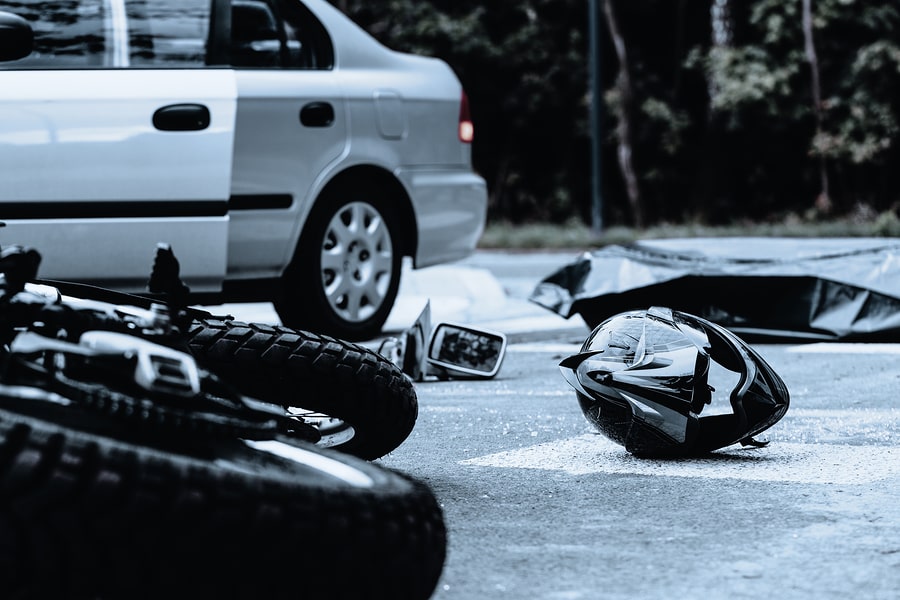
Road rash is an extremely common injury. This is especially true in summer when outdoor activities often are conducted in shorts and T-shirts instead of bundled up against the cold. Road rash—also referred to as road burn, raspberries, or strawberries—is a friction burn that happens when you forcefully rub your skin against a rough surface, such as a road, an outdoor basketball court, a tennis court, some other kind of pavement, or even just a patch of hard, bare dirt, such as the base paths of a baseball or softball field. If you have suffered road rash injuries from a motorcycle accident in Georgia, our Duluth personal injury lawyer will help you learn about your next steps.
You can get a minor road rash from falling and sliding on carpet, as well—something more common among children running around inside the house on a rainy day. This is the level of the injury most commonly referred to as raspberries or strawberries, based on how the injury appears and its size.
More common activities that can result in road rash include running, baseball or softball, skateboarding, bicycling, and, of course, riding motorcycles. In fact, some sources credit the motorcycling community with coining the phrase, as road rash is a common motorcycling injury. Skidding on the carpet is one thing. More dynamic activities, such as skateboarding, bicycling, and motorcycling, can produce much more serious road rash, with motorcycling at the top of the heap.
Like burns, which road rash most closely resembles, road rash comes in degrees, ranging from mild to severe. Those degrees are:
- First-degree road rash, in which the skin is burned but has little or no breaks in the skin, much like a first-degree burn. Treatment is fairly simple and common-sense, and first-degree road rash will heal on its own without major medical attention, likely leaving no permanent scarring.
- With a second-degree road rash, there are more breaks in the skin, but not deep ones, although the primary area of injury will have lost some skin. Any break in the skin raises the risk of infection, but most second-degree road rashes still are treated at home.
- Third-degree road rash is another question entirely. Such an injury leaves the injury site without skin, exposed down to tissue, fat, and bone. Extreme examples can involve loss of tissue and muscle, but all involve a loss of all skin at the site of the injury. These injuries require professional medical attention.
Different degrees of road rash require different levels of medical attention. So at what point should you see a doctor for your road rash?
What Is the Treatment for Road Rash?
For a mild road rash, or first-degree or even most second-degree injuries, nothing more than home treatment is required. The main focus is to clean the wound and prevent infections.
Some common treatment recommendations include:
- Clean up first: Whether you are treating your own road rash or someone else’s, wash your hands thoroughly. One of the greatest risks of road rash, of any degree, is infection. Anytime there is a break in the skin, there is a risk of infection. Minimize that risk through proper sanitation before you begin treating the road rash.
- Wash the injury thoroughly, but gently. Scrubbing too hard could worsen the injury.
- Remove any foreign objects or debris in the injury. Road rash never happens in a sanitary environment. The injury is likely to have bits of all manner of things found in the great outdoors where people get road rash, such as sand, dirt, grass, and even small rocks. Removing these foreign objects is likely to be painful, but it has to be done to minimize the risk of infection.
- Disinfect the wound. Over-the-counter antibiotic ointments will suffice for this step. Apply the ointment gently to all areas with broken skin.
- Loosely wrap the injury. Gauze or a similar bandaging material will do the trick. Wrap the injury thoroughly, but not too tightly. Keeping the area moist will help the skin regenerate.
- Change the bandages frequently, as much as a couple of times a day. Clean bandages help keep the wound clean.
- Keep an eye out for infection. If pain from the wound gets worse or the wound exhibits increased redness, suppuration, or pus, continue to apply antibiotic ointment, but if conditions don’t respond to that, see a doctor. Don’t let an infection go on and hope it will get better.
If you treat the road rash properly, you might prevent an infection. The body is a resilient thing. Further, proper treatment can prevent permanent scarring, especially with more minor cases of road rash. Of course, minor road rash injuries aren’t the only kind, especially when motorcycles and higher speeds are involved. What might be a painful scrape from falling off a bicycle can escalate to a serious injury when falling off a motorcycle moving at speeds greater than those typically achieved on a bike.
Even minor road rash injuries can get infected. Infections can lead to serious consequences. Most infections can be treated, but if infection from a minor road rash injury is allowed to fester untreated, it can lead to potentially fatal conditions such as blood poisoning, an infection that spreads through the bloodstream, or septic shock, a potentially fatal infection that can result in organ failure or death.
Even with a minor road rash injury that you believe you’ve treated well, you should watch for these signs that infection is setting in:
- The wound becomes more painful, not less, after the first day or so, when even early healing should reduce the pain
- Swelling increases, as does redness surrounding the wound
- The injured area feels warmer than the rest of your body
- Pus or other fluid is draining from the wound, with the drainage usually emitting an unpleasant smell
- You have fever or chills, or full-body ache.
Any of these signs could indicate an infection. If you notice two or more, you should contact a doctor immediately or go to the emergency room. A physician should examine any road rash that has not healed fully within about two weeks, even without any apparent infection.
More Serious Road Rash Requires More Extensive Treatment
While relatively minor road rash can be treated at home, the most serious road rash injuries will require professional care. While most road rash is relatively superficial, the worst road rash injuries can involve significant medical treatment and actually pose a threat to your life if not treated properly.
You should seek medical attention for road rash under these circumstances:
- The size of the wound is greater than about three times the size of the palm of your hand.
- The wound is on your face, hands, or feet, which are sensitive and susceptible to infection.
- If muscle or bone is visible, seek medical attention regardless of the size or location of the wound.
- If debris such as glass or rocks is lodged in the wound and will not wash out.
- If the wound seems to be bleeding excessively.
- Muscle or bone is visible.
- Foreign objects, such as glass or small rocks, are embedded in the affected area.
- There is excessive bleeding.
- If you believe the wound appears to be infected.
Just as with third-degree burns, which road rash strongly resembles, severe road rash can require reconstructive surgery. Usually, this means skin grafts, using undamaged skin from elsewhere on the body. Serious road rash leaves the affected part of the body with no skin, and often damage so severe that the body has no means of regenerating healthy skin at that location. Healing without skin grafts is sometimes possible but would usually leave horrific scars. Skin grafts can avoid that.
All skin grafts are a surgical procedure performed in a hospital. Recuperation can be very lengthy, and not all skin grafts take the first time. The procedure involves taking undamaged skin from one part of the body and attaching it with stitches and bandages to the site of the injury, then allowing new blood vessels to grow and aid in the growth of new skin. Usually, the transplanted skin will grow and attach to the location it is intended to cover. This is not always the case, though, and further attempts sometimes are necessary.
Depending upon the size of the injury, different kinds of skin grafts are used. One type, called split-thickness grafts, is used to cover large damaged areas, using skin taken from the thighs, abdomen, buttocks, or back. Such grafts tend to be fragile and do not blend as well with the surrounding healthy skin. Smaller injuries are treated with full-thickness grafts, taken from the abdomen, groin, forearm, or from above the collarbone. They are generally used on highly visible parts of the body and blend well with the surrounding skin.
As you might expect, skin grafts are not inexpensive. One study examined the cases of skin-graft patients. They found that the patients were in the hospital for an average of 10 days and incurred hospital costs of more than $35,000. In addition, each had an average provider charge of more than $10,000. Post-hospitalization care, medications, and therapy were not included in the study. Neither did the study examine the costs of lost work time.
Should you suffer a serious road rash injury that requires the pain, expense, and recuperation time of skin grafts, you might have options to recover for your medical expense, pain and suffering, and other accident-related losses. If your accident was a result of another person’s negligence, our Lawrenceville personal injury lawyer will help you recover compensation for your injuries by filing a Georgia personal injury claim. Such compensation would include not only all of your medical expenses, lost pay from time away from work, post-accident therapy, and the cost of any continuing care, but also could include damages for pain and suffering.
While your personal motorist’s insurance policy might cover your medical expenses, you also might have a fight on your hands to get that much from your own insurance company, particularly if the limits on your insurance are not enough to cover your medical costs. As for damages beyond that, you likely would have an even tougher fight to get a reasonable settlement out of the insurance company for the other party. An attorney with experience dealing with insurance companies is sure to have more success in obtaining a reasonable settlement than you would.
Furthermore, if you are having trouble paying for your medical treatment, a lawyer can connect you with resources that can help cover your expenses while you are waiting for your case to settle or go to trial. Options include personal injury financing or allowing a healthcare provider to place a lien on any settlement or award you may receive in the future.
Also, an attorney could help tremendously with determining whether another party’s negligence caused your accident. The easy one, of course, is if you suffered your injury by putting your bike down on the road while avoiding an oncoming vehicle that was on your side of the centerline. Other scenarios, though, may require careful investigation, including for debris left in the road by another party, faulty maintenance of the road by a government entity, or even improperly manufactured or installed equipment on your motorcycle. An accident attorney and his investigators will do a far better job of determining these things than you would.
After an accident that results in road rash or other injuries, it’s easy to feel overwhelmed by mounting medical bills and other expenses—especially if you are not working. Fortunately, an experienced lawyer can help you determine whether you can obtain compensation for your injuries and can also ensure that you obtain a settlement or award as quickly as possible. For this reason, it’s in every motorcycle accident victims’ best interest to contact our Peachtree Corners personal injury lawyer as soon as possible.














